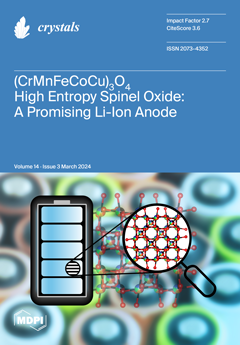The
N-oxide functional group has been exploited for synthetic strategies and drug design, and it has been utilized in imaging agents. Herein, we present rare examples of neutral heteroleptic cyclometallated Ir(III) compounds that contain an uncoordinated
N-oxide functional group. These species,
[...] Read more.
The
N-oxide functional group has been exploited for synthetic strategies and drug design, and it has been utilized in imaging agents. Herein, we present rare examples of neutral heteroleptic cyclometallated Ir(III) compounds that contain an uncoordinated
N-oxide functional group. These species, along with others described within, were verified by NMR, EA, HRMS, and single-crystal X-ray analysis.
N-oxide-containing Ir(III) species were prepared selectively in high yields > 66% from chloro-bridged Ir(III) dimers with Acipimox, a picolinate-type ligand containing the
N-oxide functional group. Non-
N-oxide analogs were synthesized in a similar fashion (yields > 77%). Electrochemical comparison (cyclic voltammetry) indicates that the presence of an
N-oxide functional group anodically shifts the reduction potential, suggesting that the
N-oxide is acting as an electron-withdrawing group in these species. Crystallographic studies were pursued to examine the coordination behavior of these
N-oxides compared to their non-oxidized congeners. The Ir(III) complexes with Acipimox indeed leave the
N-oxide uncoordinated and exposed on the complexes. The uncoordinated
N-oxide group is influential in directing the packing structures of these complexes directly through C-H···O and O···π interactions at the
N-oxide. The crystallographic characterization of cationic Ir(III) compounds with uncoordinated nitrogen atoms is also presented. The C-H···N interactions between these complexes form a variety of dimers, finite chains, and continuous chains. Future work will focus on functionalizing the cationic Ir(III) species into their corresponding
N-oxide derivatives and rigorously characterizing how the
N-oxide functional group impacts the optical properties of transition metal compounds in both cationic and neutral complexes.
Full article





